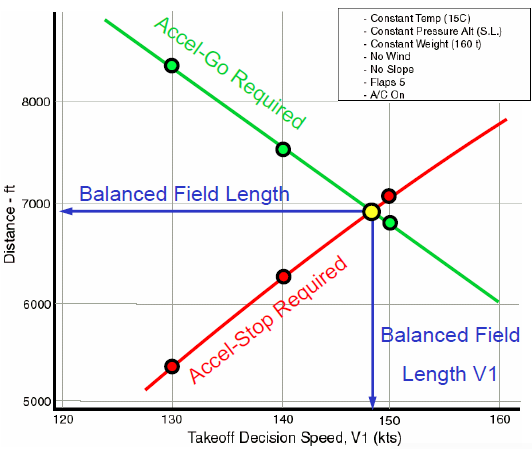Let's clarify:
Large commercial airplanes take off in a way which ensures there is sufficient runway length to stop in case of aborted takeoff. There is a speed threshold, V1 speed or decision speed, that determines whether the takeoff can still be aborted, or the airplane must continue and liftoff whatever happens. See balanced field takeoff on Wikipedia.
The balanced field length is the minimum runway length to execute a balanced field takeoff for a given aircraft. The V1 speed in this case is the lowest possible. Additional runway length allows greater V1 to be selected (greater V1 means a greater portion of the ground roll with a possibility to abort the takeoff).

V1 value and balanced field length (source)
50 ft distance: This is the distance from the start of the ground roll to the point where the aircraft is airborne and 50 ft over the runway, to ensure obstacle clearance. 35 ft is another typical obstacle clearance in the US, and indeed the distance to climb to 35 ft is shorter than the previous one (a 35 ft clearance is implicitly used to compute the balanced field distance)

Takeoff roll distance and Obstacle clearance distance (source)
Using the diagram
From this slideshow which reproduces the figure you refer to:

(Source)
This depicts the relationship between takeoff parameter and different distances, either the ground roll distance or the obstacle clearance distance (35 and 50 ft) in the three types of takeoff described above.
There are three groups from left to right:
- Jet using balanced field T/O (the obstacle clearance is implicitly 35 ft).
- Jet not using balanced field T/O.
- Propeller (not using balanced field T/O).
In these groups, there are one or two data provided:
Jet using balanced field T/O. The only distance provided is the balanced field length (distance to accelerate, abort the T/O at V1 and decelerate). You must choose the right curve, depending on the number of engines (twin, tri or four-engine).
Jet / propeller. There are two distance provided and you may need both. Ground roll is the distance until the aircraft leaves the ground (liftoff); 50 ft is the ground roll + the distance to climb to 50 ft.
See also:



